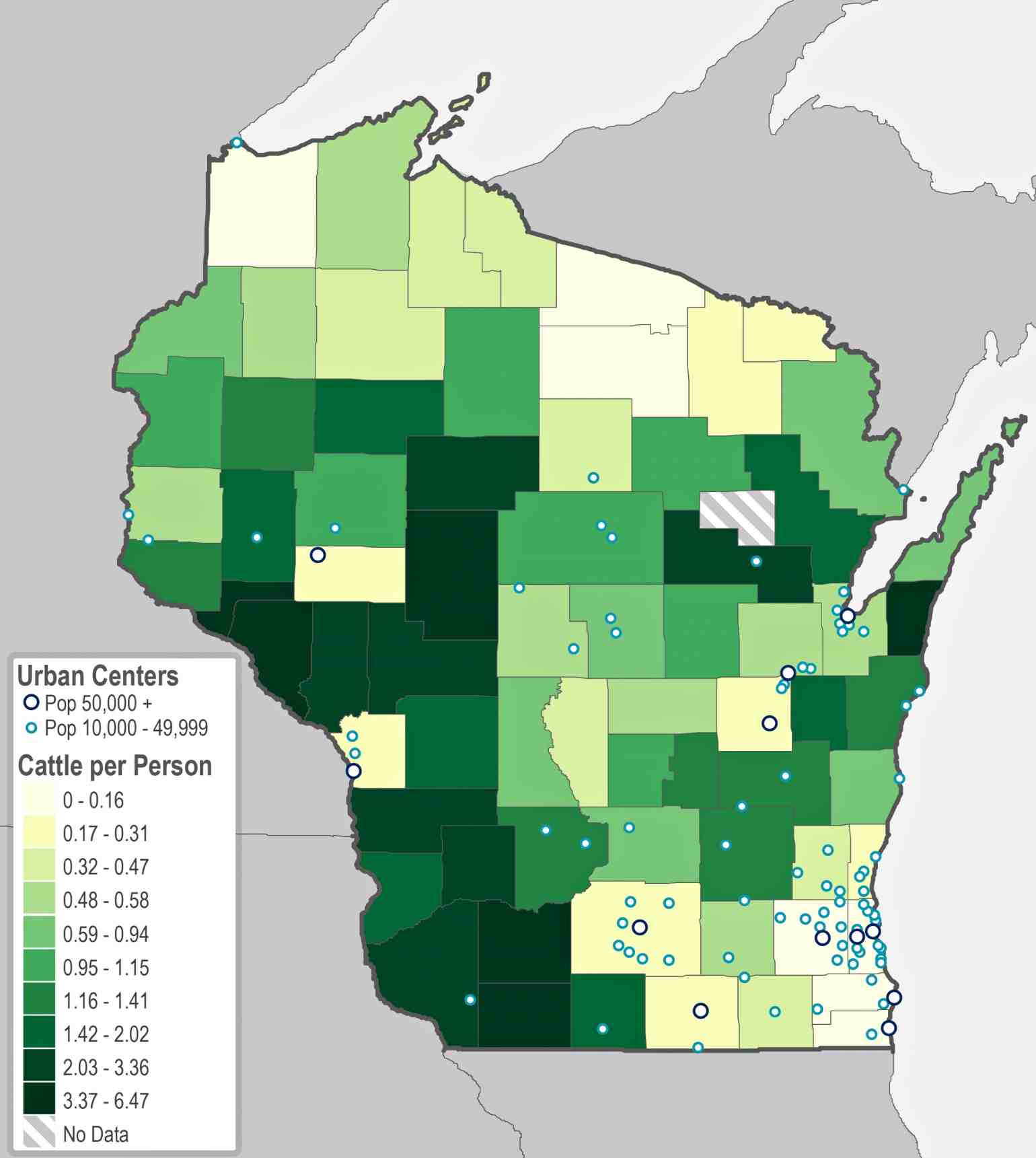Searching For The Rural-Urban Divide In Wisconsin
Political narratives in the United States often rely on the ideas of "rural" and "urban" as distinct and diametrically opposed places in conflict.
May 19, 2017

People per square mile map of Wisconsin crop

Political narratives in the United States often rely on the ideas of “rural” and “urban” as distinct and diametrically opposed places in conflict. It’s a trope that can rob conversations of nuance and paper over the complex lived realities of all Americans, whether they live in a dense city neighborhood, in a remote place with barely any neighbors, or any of the many, many places in between.
In demographic terms, there are multiple, overlapping definitions of rural and urban areas, with the former including a variety of different settings. Definitions by federal agencies like the U.S. Census Bureau and the U.S. Department of Agriculture can include one place more than an hour’s drive away from a major city and a place with almost 10,000 people, even though each may have very different economies and social circumstances.
Differences in definitions, of course, hardly change the fact that rural places are important to the politics, economy, and identity of a state like Wisconsin. On the May 17, 2017 edition of Wisconsin Public Radio’s Central Time, host Rob Ferrett interviewed Malia Jones, a social epidemiologist with the University of Wisconsin Applied Population Laboratory about the various methods for characterizing places as rural and urban.
“Compared to other states, Wisconsin has a fairly high proportion of rural areas, and that’s true no matter which of these definitions you use,” she said. “The reason all these definitions exist is because lots of federal and state programs offer services based on the economic characteristics, the social and socioeconomic characteristics of people who live in these places.”
Jones cautioned against painting the economics and politics of all rural areas with the same broad brush. Commuting patterns, for instance, reveal a lot of information about different locations. Some rural counties may be focused overwhelmingly on agriculture, while others have a particularly high proportion of people who commute elsewhere for their jobs, signaling a more complex economic relationship with urban areas.
Additionally, as much as the “rural voter” has become a distinct character in the wake of Donald Trump’s victory in the 2016 presidential election, that label is likewise an oversimplification — Jones pointed to recent stories from national news outlets like the New York Times reporting on political divisions in rural Wisconsin.
“A lot of this narrative at the national level has been coming out of very urban places,” Jones said. “I think a lot of times those sources just look at the differences between what’s happening in major metros and everything else, and the truth is there is a lot of variation in that everything else, from places that are truly remote like the northernmost counties in Wisconsin, to places that are actually relatively good sized cities up to 10,000 people.”
In other words, “everything else” could be both Vilas County and downtown Sparta in Monroe County. Rural and urban places are not clear-cut opposites, but exist along a continuum.
“I’m hoping that people can take a more nuanced view of what rural America and in particular the Rust Belt states including Wisconsin really look like, and what challenges are faced in those places,” Jones said, “and try to understand better the recent election outcome as well as more generally the economic needs of rural places.”
 Passport
Passport



















Follow Us